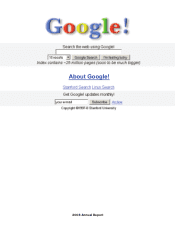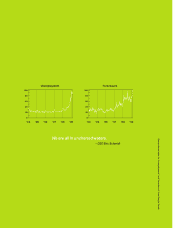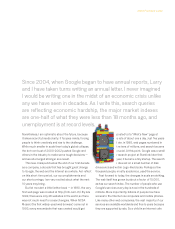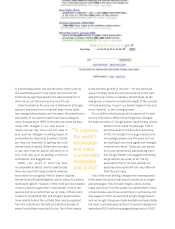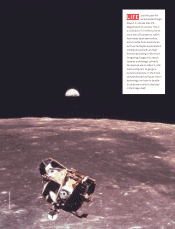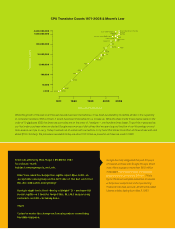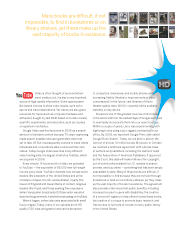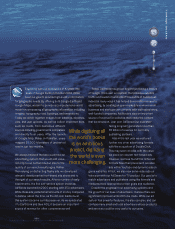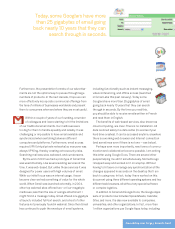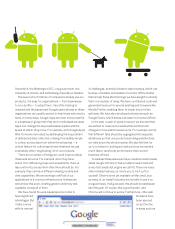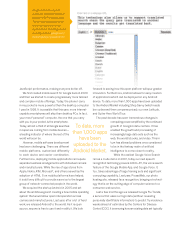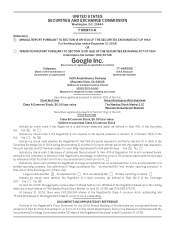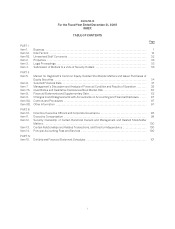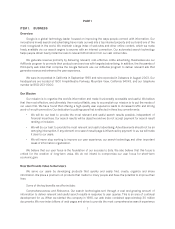Google 2008 Annual Report Download - page 7
Download and view the complete annual report
Please find page 7 of the 2008 Google annual report below. You can navigate through the pages in the report by either clicking on the pages listed below, or by using the keyword search tool below to find specific information within the annual report.
Many books are di cult, if not
impossible, to fi nd in bookstores or on
library shelves, yet these make up the
vast majority of books in existence.
Video is often thought of as an entertain-
ment medium, but it is also a very important
source of high-quality information. Some queries seem
like natural choices to show video results, such as for
sports and travel destinations. Yet videos are also great
resources for topics such as computer hardware and
software (I bought my last RAID based on a video review),
scientifi c experiments, and education, such as courses
on quantum mechanics.
Google Video was fi rst launched in 2005 as a search
service for television content because TV close-captioning
made search possible and user-generated video had
yet to take o . But it subsequently evolved to a site where
individuals and corporations alike could post their own
videos. Today Google Video searches many di erent
video hosting sites, the largest of which is YouTube, which
we acquired in 2006.
Every minute, 15 hours worth of video are uploaded
to YouTube — the equivalent of 86,000 new full-length
movies every week. YouTube channels now include world
leaders (the president of the United States and prime
ministers of Japan, the UK, and Australia), royalty (the
Queen of England and Queen Rania of Jordan), religious
leaders (the Pope), and those seeking free expression
(when Venezuelan broadcaster El Observador was shut
down by the government, it started broadcasting on YouTube).
When it began, online video was associated with small
fuzzy images. Today, many of our uploads are in HD
quality (720 rows and greater) and can be streamed
to computers, televisions, and mobile phones with
increasing fi delity (thanks to improvements in video
compression). In the future, vast libraries of movie
theater-quality video (4000+ columns) will be available
instantly on any device.
Books are one of the greatest sources of information
in the world, and from the earliest days of Google we hoped
to eventually incorporate them into our search corpus.
Within a couple of years, Larry was experimenting with
digitizing books using a jury-rigged contraption in our
office. By 2003, we launched Google Print, now called
Google Book Search. Today, we are able to search the
full text of almost 10 million books. Moreover, in October
we reached a landmark agreement with a broad class
of authors and publishers, including the Authors’ Guild
and the Association of American Publishers. If approved
by the Court, this deal will make millions of in-copyright,
out-of-print books available for U.S. readers to search,
preview, and buy online — something that has been simply
unavailable to date. Many of these books are di cult, if
not impossible, to fi nd because they are not sold through
bookstores or held on most library shelves, yet they make
up the vast majority of books in existence. The agreement
also provides other important public benefi ts, including
increased access to users with disabilities, the creation
of a non-profi t registry to help others license these books,
the creation of a corpus to promote basic research, and
free access to full texts at a kiosk in every public library
in the United States.

